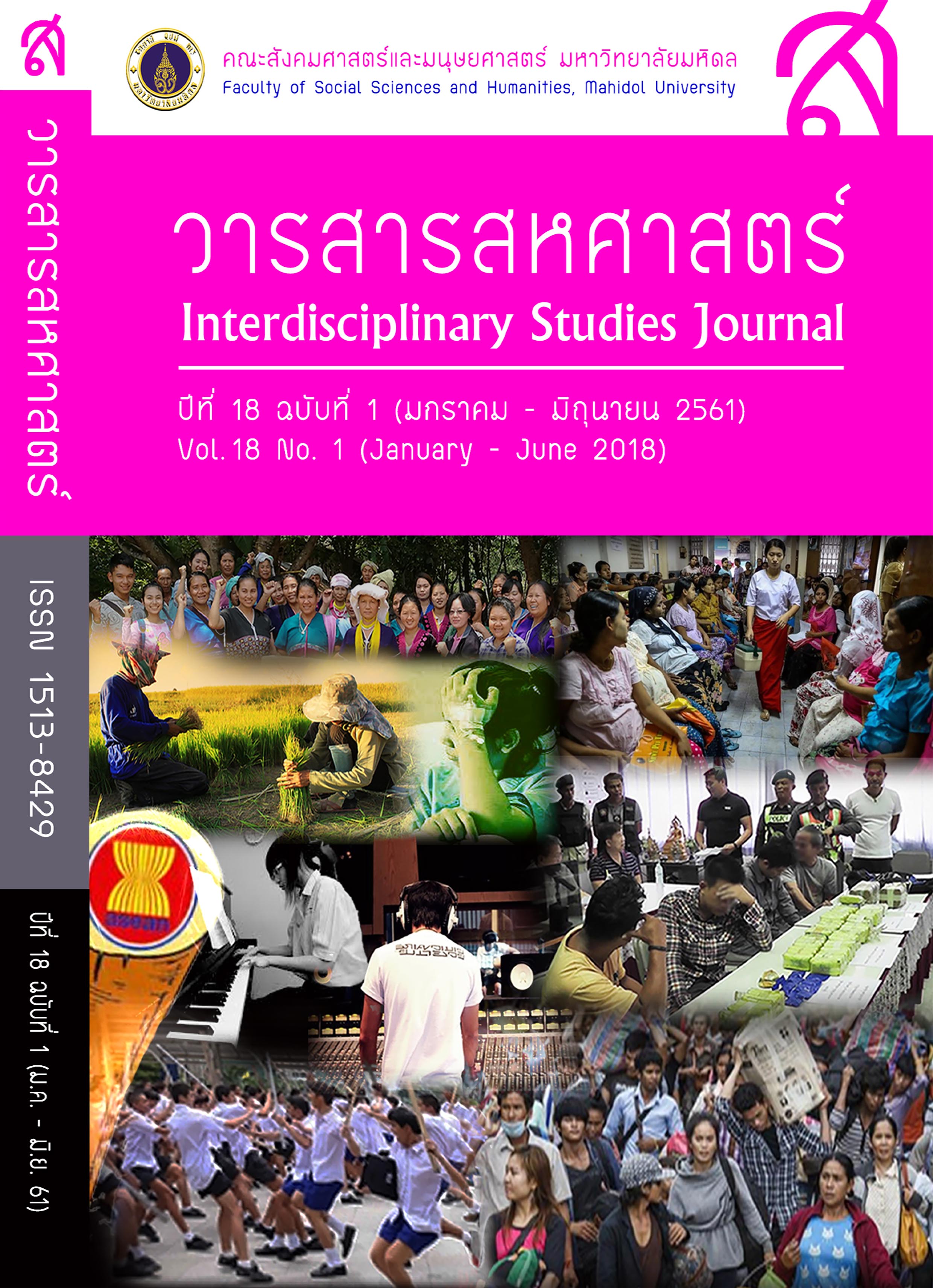Ecological Approach to Vocabulary Density Estimation
คำสำคัญ:
ECOLOGICAL APPROACH, VOCABULARY DENSITYบทคัดย่อ
This study scrutinizes to what degree an extension of the Capture-Recapture (CR) approach, extrapolated from ecology, gives us further insight into second language (L2) productive lexical density. Previous CR studies that have adopted this method to estimate L2 productive vocabulary size have typically taken only two written samples, produced within a few days of each other, from the participants. Results have invariably shown that this approach does not measure absolute vocabulary size. Another issue that compromises the CR scores is the kind of task used to elicit samples of productive vocabulary. In ecology there is an assumption that all animals of the target population have an equal chance of being captured. In a lexical context this assumption would translate as that all vocabulary items have an equal chance of being produced. This assumption presents a serious problem to overcome because different lexical items have different probabilities of being elicited.
This paper addresses both issues. On the one hand, three samples from 26 Thai students of Spanish as L2 have been taken within a period of two weeks (referred to as “an extension of the CR method”). On the other hand, a context-free task based on the Roman alphabet was used to elicit productive vocabulary. The results of this approach were compared to those of the CR method (using only the first two samples). The overall estimates are higher when using three samples. However, once again, the scores do not give absolute vocabulary size. A discussion of the method’s assumptions is provided together with an interpretation of the results.
References
Beretta, A., Campbell, C., Carr, T. H., Huang, J., Schmitt, L. M., Christianson, K., & Cao, Y. (2003). An ER-fMRI investigation of morphological inflection in German reveals that the brain makes a distinction between regular and irregular forms. Brain and Language, 85 (1), pp 67-92.
Fitzpatrick, T. (2000). Using Word Association Techniques to Measure Productive Vocabulary in a Second Language. Language Testing Update, 27, 64-70.
Jaeger, J. J., Lockwood, A. H., Kemmerer, D. L., van Valin, R. D. Jr., Murphy, B. W., & Khalak, H. G. (1996). A Positron Emission Tomographic Study of Regular and Irregular Verb Morphology in English. Language, 72 (3), pp 451-497.
Krebbs, J. C. (1999). Ecological Methodology. Addison-Welsey Educational Publishers, Inc.
Laufer, B., Nation, P. (1995). Vocabulary size and use: lexical richness in L2 written productions. Applied Linguistics 16: 307-322.
Laufer, B., Nation, P. (1999), A vocabulary-size test of controlled productive ability. Language Testing, 1 (1): 33.
Laufer, B. (2002a). Computer Adaptive Test of Size and Strength, Paper presented at Second Language Vocabulary Acquisition Colloquium, Leiden, March 2002.
Malvern, D. D., & Richards, B. J. (1997). A new measure of lexical diversity. In A. Ryan &
A. Wray (Eds.), Evolving models of language (pp. 58-71). Clevedon: Multilingual Matters.
Meara, P., & Fitzpatrick, T. (1999). Lex30: an improved method of assessing productive vocabulary in an L2. System 28. pp. 19-30.
Meara, P., and Olmos Alcoy, J. C., (2010). Words as species: An alternative approach to
estimating productive vocabulary size. Reading in a Foreign Language, 22. pp. 222-236.
Nation, I. S. P. (2001). Learning Vocabulary in Another Language, Cambridge University
Press.
Petersen, C. G. J. (1896). The yearly immigration of young plaice into the Linsfiord from the German Sea. Rep. Dan. Biol. Stn, 6, 5–84.
Rodríguez-Fornells, A., Munte, T. F., & Clahsen, H. (2002). Morphological Priming in Spanish verb forms: an ERP repetition priming study. Journal of CognitiveNeuroscience, 14 (3), pp 443-454.
Seber, G. A. F. (1973). The estimation of animal abundance and related parameters. Bristol: J. W. Arrowsmith Ltd.
Williams, J., Segalowitz, N., & Leclair, T (2014). Estimating second language productive
vocabulary size: A capture-recapture approach. The Mental Lexicon, 9 (1), 23-47.

Downloads
เผยแพร่แล้ว
How to Cite
ฉบับ
บท
License
บทความหรือข้อคิดเห็นใดๆ ในวารสารสหศาสตร์เป็นวรรณกรรมของผู้เขียนโดยเฉพาะ คณะสังคมศาสตร์และมนุษยศาสตร์ มหาวิทยาลัยมหิดล และกองบรรณาธิการไม่จำเป็นต้องเห็นด้วย
กองบรรณาธิการไม่สงวนสิทธิ์ในการคัดลอกบทความเพื่อการศึกษาแต่ให้อ้างอิงแหล่งที่มาให้ครบถ้วนสมบูรณ์
ท่านที่ประสงค์จะส่งบทความ ผลงานวิจัย ข้อคิดเห็นทางวิชาการลงตีพิมพ์วารสารสหศาสตร์ กรุณาส่งมาที่คณะสังคมศาสตร์และมนุษยศาสตร์ มหาวิทยาลัยมหิดล



